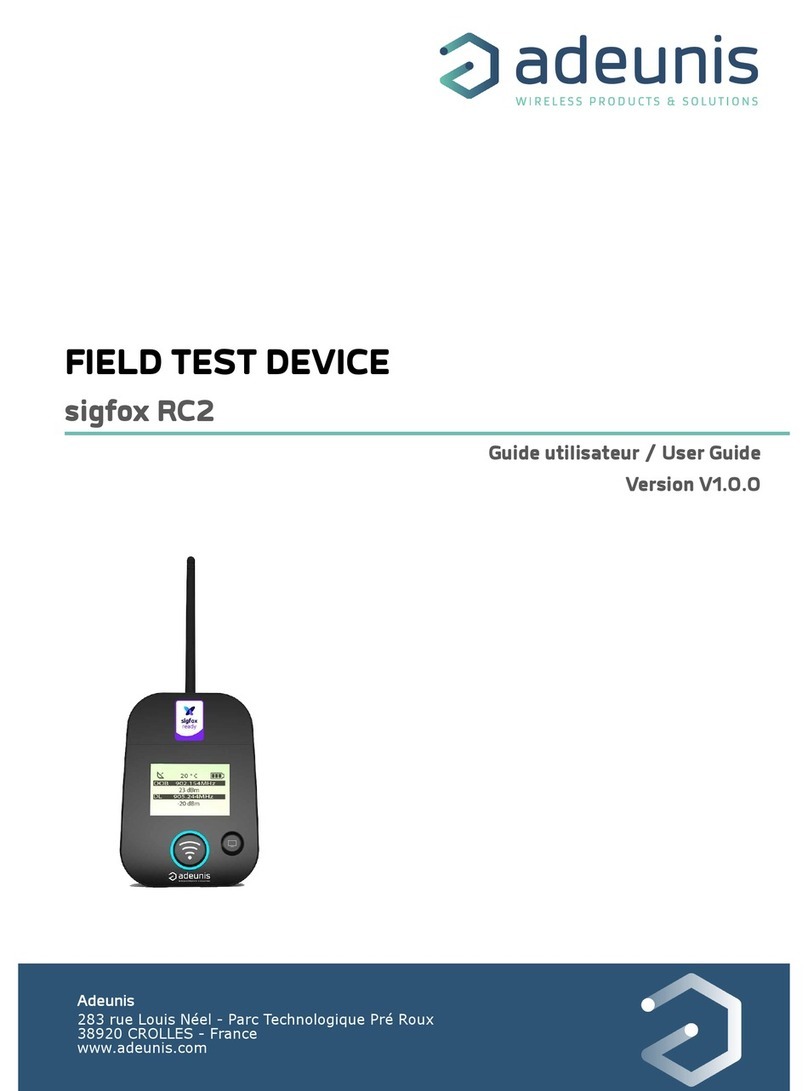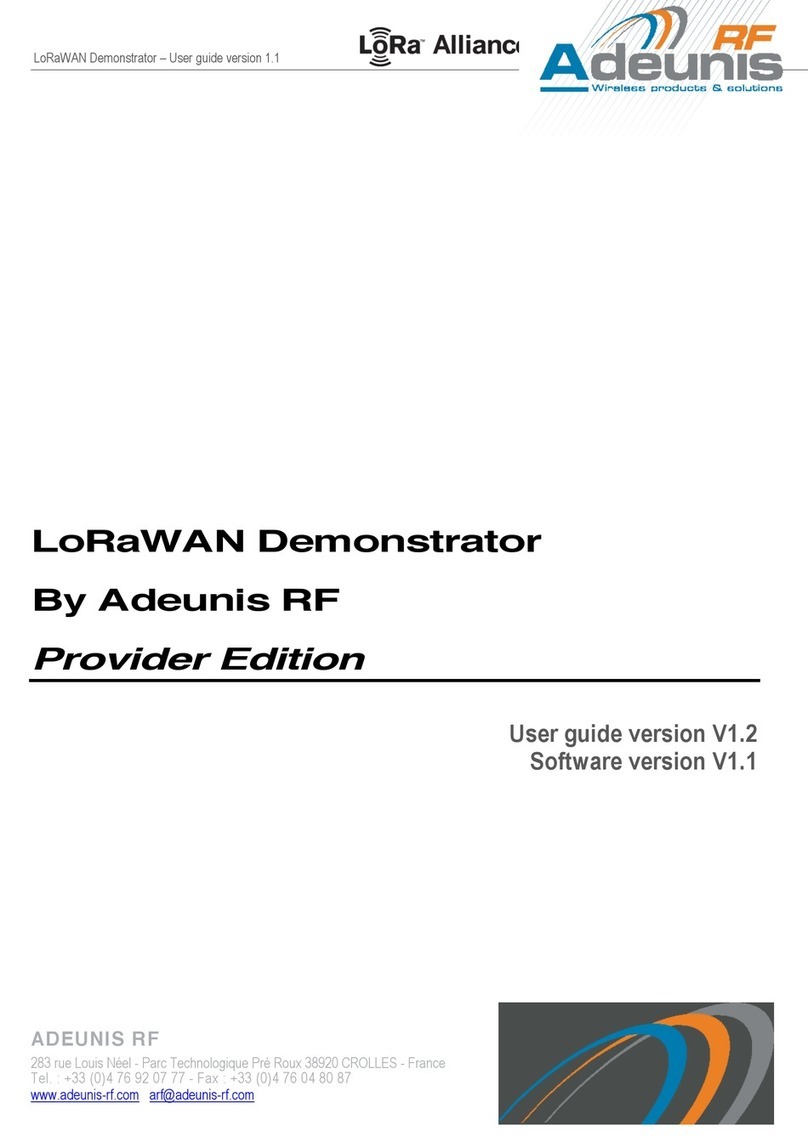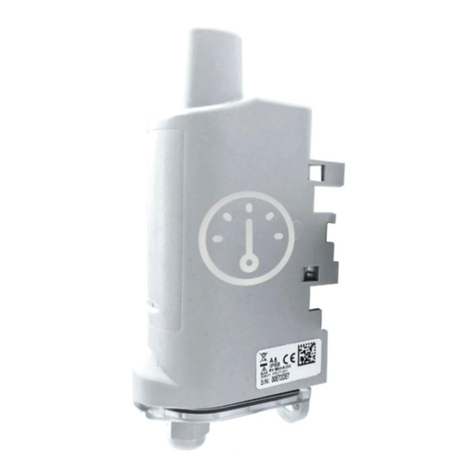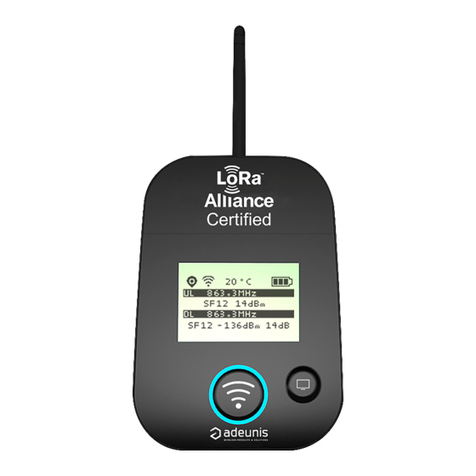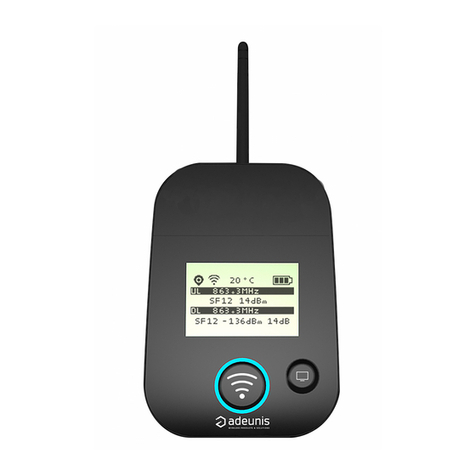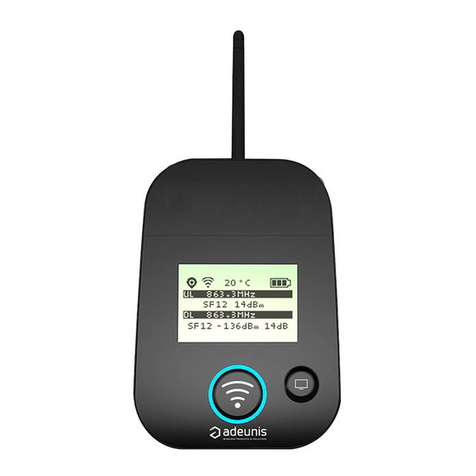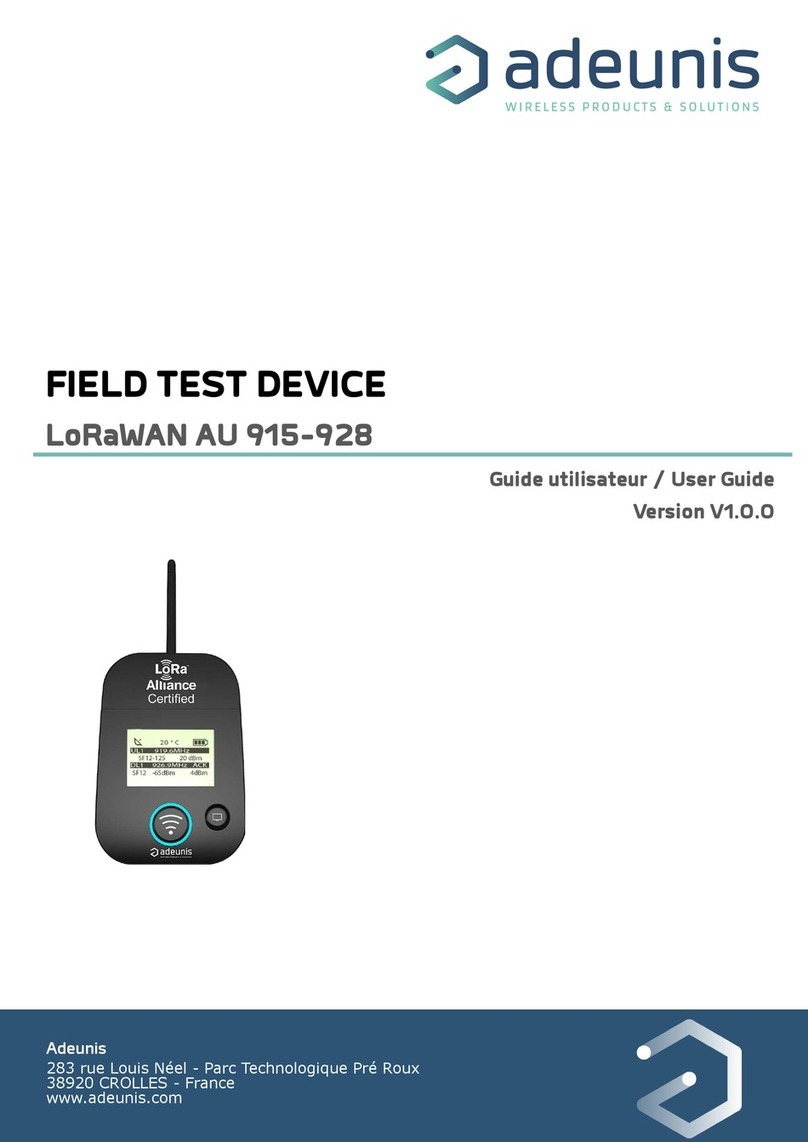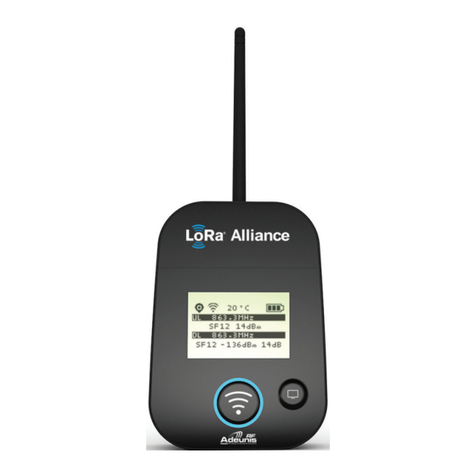LoRaWAN 915 FTD –User guide version 1.0
Page 3/ 35
Table of contents
DOCUMENT INFORMATION ..................................................................................................................................................................... 2
TABLE OF CONTENTS ...............................................................................................................................................................3
DISCLAIMER.................................................................................................................................................................................... 5
TECHNICAL SUPPORT ........................................................................................................................................................................... 6
DECLARATION OF CONFORMITY CE ....................................................................................................................................................... 7
ENVIRONMENTAL RECOMMENDATIONS.................................................................................................................................................. 8
WARNINGS......................................................................................................................................................................................... 8
READ THE INSTRUCTIONS IN THE MANUAL.................................................................................................................................................. 8
DISPOSAL OF WASTE BY USERS IN PRIVATE HOUSEHOLDS WITHIN THE EUROPEAN UNION ......................................................................... 9
HAFTUNGSAUSSCHLUSS .............................................................................................................................................................. 10
HINWEISE ZUM UMWELTSCHUTZ ........................................................................................................................................................ 10
WARNHINWEISE................................................................................................................................................................................. 10
EMPFEHLUNGEN ZUR VERWENDUNG...................................................................................................................................................... 11
ENTSORGUNG DER ABFÄLLE VON BETREIBERN IN PRIVATHAUSHALTEN INNERHALB DER EUROPÄISCHEN UNION.............................................. 11
1DEVICE OVERVIEW.........................................................................................................................................................12
1.1 DEVICE DESCRIPTION .............................................................................................................................................................. 12
1.2 MECHANICAL DESCRIPTION ...................................................................................................................................................... 12
1.3 TECHNICAL SPECIFICATIONS...................................................................................................................................................... 13
1.4 CHARGING THE FTD ............................................................................................................................................................... 13
2DEVICE OPERATION .......................................................................................................................................................14
2.1 USER INTERFACE .................................................................................................................................................................... 14
2.1.1 Button 1..................................................................................................................................................................... 14
2.1.2 Button 2..................................................................................................................................................................... 14
2.1.3 ON/OFF button.......................................................................................................................................................... 14
2.1.4 Charge State Indicator .............................................................................................................................................. 14
2.1.5 USB connector........................................................................................................................................................... 14
2.1.6 LCD screen description .............................................................................................................................................. 15
2.2 USING THE FTD..................................................................................................................................................................... 17
2.2.1 Default configuration ................................................................................................................................................ 17
2.2.2 Powering up the device ............................................................................................................................................. 17
2.2.3 Join procedure........................................................................................................................................................... 17
2.2.4 Sending a frame ........................................................................................................................................................ 17
2.2.5 Accelerometer ........................................................................................................................................................... 17
2.2.6 GPS ............................................................................................................................................................................ 17
3DEVICE CONFIGURATION ...............................................................................................................................................18
3.1 SERIAL LINK PARAMETERS ........................................................................................................................................................ 18
3.2 COMMAND INTERFACE............................................................................................................................................................ 19
3.3 REGISTERS LIST ...................................................................................................................................................................... 20
3.3.1 Network Keys ............................................................................................................................................................ 20
3.3.2 Activation - OTAA/ABP.............................................................................................................................................. 21
3.3.3 Channels configuration ............................................................................................................................................. 22
3.3.4 RX2 window configuration........................................................................................................................................ 26
3.3.5 LoRa Options ............................................................................................................................................................. 27
3.3.6 UpLink port................................................................................................................................................................ 27
3.3.7 ACK request + Class ................................................................................................................................................... 28
3.3.8 Transmission periodicity............................................................................................................................................ 28
3.3.9 Accelerometer ........................................................................................................................................................... 28
3.3.10 GPS configuration...................................................................................................................................................... 29
3.3.11 Payload format.......................................................................................................................................................... 29
3.3.12 Band type .................................................................................................................................................................. 29
4PAYLOAD DESCRIPTION .................................................................................................................................................30
4.1 FRAME 1.............................................................................................................................................................................. 30
4.2 FRAME 2.............................................................................................................................................................................. 31
